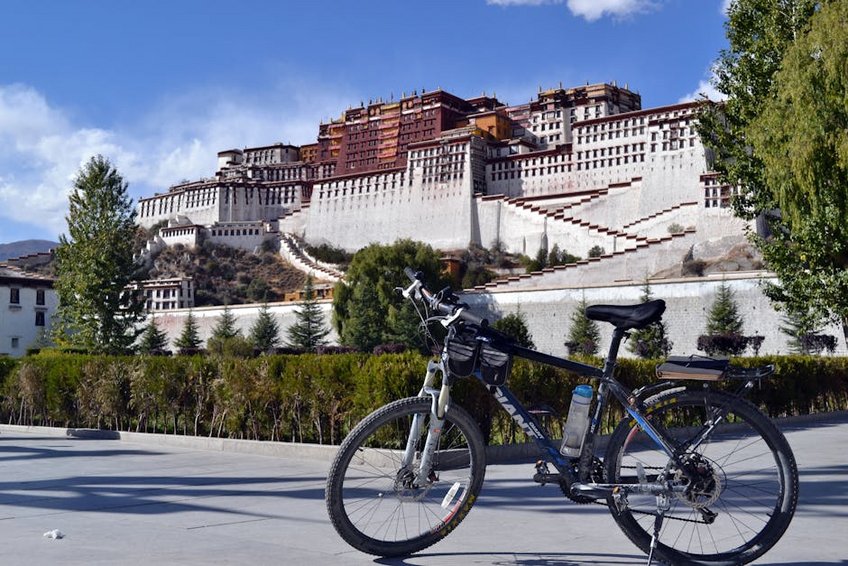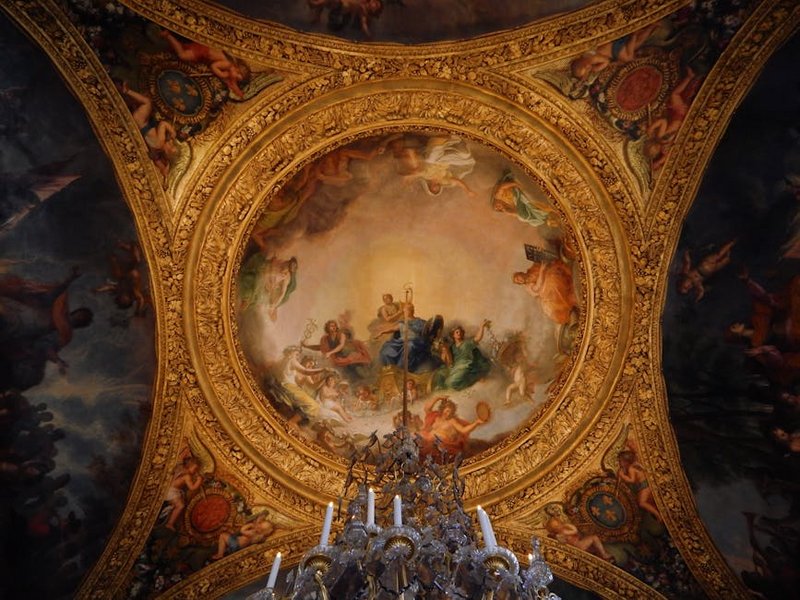Lhasa Potala Palace: Your Ultimate Travel Guide to Tibet’s Crown Jewel
Standing majestically atop Marpo Ri hill, the Lhasa Potala Palace isn’t just a building; it’s the spiritual heart of Tibet and an architectural marvel that has captivated travelers for centuries. This UNESCO World Heritage site served as the winter palace of the Dalai Lamas and represents the pinnacle of Tibetan Buddhist culture and history. As you approach this towering structure rising 170 meters above the Lhasa valley, you’ll understand why it’s considered one of the world’s most extraordinary cultural landmarks. Visiting the Lhasa Potala Palace requires careful planning due to its high altitude location and cultural significance, but the experience rewards you with breathtaking views, profound spiritual encounters, and memories that will last a lifetime. The palace complex contains over 1,000 rooms, 10,000 shrines, and about 200,000 statues, making it one of the most culturally dense destinations you’ll ever explore.
Lhasa Potala Palace Essential Information – What Every Traveler Must Know
Before embarking on your journey to the Lhasa Potala Palace, understanding its historical context and practical requirements will significantly enhance your experience. The palace was constructed in the 7th century by King Songtsen Gampo, though most of what stands today dates from the 17th century under the Fifth Dalai Lama. This massive structure divides into the Red Palace (religious functions) and White Palace (political functions), spanning over 130,000 square meters. Due to Tibet’s special autonomous status, foreign travelers must obtain a Tibet Travel Permit through registered tour operators, which typically takes 15-20 days to process. The altitude of Lhasa (3,656 meters/11,990 feet) requires acclimatization, so plan to spend 2-3 days in Lhasa before attempting the palace climb.
Historical Significance and Cultural Importance
- The palace served as the primary residence of Dalai Lamas until the 14th Dalai Lama fled to India during the 1959 Tibetan uprising
- It represents the integration of religious and political power in traditional Tibetan society
- The architecture blends traditional Tibetan style with influences from Han, Manchu, and Nepalese design
- Budget travelers should allocate $1,200-1,800 for an 8-10 day Tibet tour including permits, basic accommodation, group tours, and economy transportation
- Mid-range travelers will spend $2,000-3,000 for comfortable hotels, private guide, better meals, and included cultural experiences
- Luxury experiences range $3,500-5,000 featuring premium hotels, expert guides, private transportation, and special access permits
- UNESCO World Heritage Centre – Historic Ensemble of the Potala Palace
- Lonely Planet – Lhasa Travel Guide
Entry Requirements and Permits – Key Details
Accessing the Lhasa Potala Palace involves more than just purchasing an entry ticket. Foreign nationals must secure a Tibet Travel Permit through a registered Tibetan tour company, which will also arrange your guide—mandatory for all foreign visitors. Chinese citizens need only their ID card, while international visitors must present passport and permit. During peak season (May-October), ticket availability becomes extremely limited, often requiring advance booking weeks ahead. The palace management has implemented visitor caps to protect the fragile ancient structure, allowing only 2,300 visitors daily during high season.

Lhasa Potala Palace Planning Your Trip – Season, Budget, and Preparation
Strategic planning separates a stressful trip from an unforgettable experience when visiting the Lhasa Potala Palace. The best approach involves allocating 3-4 days in Lhasa for proper acclimatization before attempting the palace visit, which involves climbing approximately 1,200 steps at high altitude. Your budget should account for permits, guided tours, accommodation, and transportation—significantly more than typical Chinese destinations. Western travelers should prepare for basic facilities and occasional infrastructure challenges, though Lhasa has developed considerably in recent years with comfortable hotels and improved transportation options.
Best Time to Visit Lhasa Potala Palace
The optimal visiting window for Lhasa Potala Palace falls between April and October, with May, June, and September offering the ideal balance of pleasant weather and manageable crowds. July and August bring warmer temperatures but also the rainy season and peak tourist numbers. Winter months (November-March) offer fewer crowds and lower prices but extremely cold temperatures, with some facilities potentially closed. Tibetan festivals, particularly Saga Dawa (May/June) and Shoton Festival (August), provide incredible cultural experiences but also larger domestic tourist numbers. Morning visits are recommended to avoid afternoon heat and crowds.
Budget Planning and Costs for Lhasa Potala Palace
Essential Preparation Checklist for High-Altitude Travel
Preparing for your Lhasa Potala Palace visit requires special attention to altitude considerations. Begin altitude medication (like Diamox) after consulting your doctor, arrange comprehensive travel insurance that covers high-altitude destinations, and pack layered clothing for variable conditions. Essential items include strong sunscreen (SPF 50+), quality sunglasses, comfortable walking shoes with good grip, and medications for altitude sickness. mentally prepare for reduced physical capacity at high altitude—even fit individuals may struggle with the palace steps. Learn basic Tibetan phrases and cultural etiquette to enhance your interactions with local people.
Lhasa Potala Palace Top Attractions and Activities – Beyond the Main Palace
While the palace itself is the main attraction, the surrounding complex and Lhasa offer numerous complementary experiences that enrich your visit. The palace tour typically follows a specific route through chapels, tombs, and assembly halls, each with unique artistic and religious significance. Don’t miss the incredible views from the palace roof overlooking Lhasa city and the surrounding mountains. Combine your palace visit with other significant Lhasa sites including Jokhang Temple (Tibet’s most sacred temple), Barkhor Street (pilgrimage circuit and market), and Drepung Monastery (once the world’s largest monastery). These sites together provide a comprehensive understanding of Tibetan Buddhism and culture.
Must-See Highlights Within the Palace Complex
The Red Palace contains the most sacred spaces including the tombs of eight Dalai Lamas, with the Fifth Dalai Lama’s tomb standing five stories high and containing 3,721 kg of gold and countless precious stones. The Dharma Cave from the 7th century represents the oldest surviving part of the palace, while the Saint’s Chapel contains a revered statue of Avalokiteshvara. The White Palace features the Dalai Lama’s living quarters and the magnificent East Main Hall where important religious and political ceremonies occurred. The panoramic view from the roof provides unforgettable photo opportunities of Lhasa valley and surrounding mountains.
Hidden Gems and Local Favorites Around Lhasa
Beyond the main tourist circuit, Lhasa offers several lesser-known experiences that provide deeper cultural immersion. The Tibetan Traditional Medicine Hospital provides fascinating insights into ancient healing practices, while the Lhasa Carpet Factory demonstrates traditional carpet weaving techniques. For a unique perspective, join local Tibetans walking the Lingkhor pilgrimage circuit that circles the entire city. Sample authentic Tibetan cuisine at family-run restaurants away from tourist areas, trying specialties like thenthuk (hand-pulled noodle soup) and yak meat momos. Visit during early morning hours to witness devout Tibetans performing koras (circumambulations) around the palace.
Lhasa Potala Palace Practical Travel Information – Transportation and Accommodation
Navigating travel to and within Tibet requires understanding unique regional regulations and infrastructure. All foreign travelers must book through approved tour operators who handle permits, transportation, and guides. The most common entry points are flying into Lhasa Gonggar Airport (most direct) or taking the Qinghai-Tibet Railway from Xining (better for acclimatization). Within Lhasa, walking is often the best way to explore the central areas, while taxis and hired vehicles with drivers handle longer distances. Accommodation ranges from basic guesthouses to international-standard hotels, though options remain more limited than in other Chinese cities.
| Category | Options/Features | Price Range (USD) |
|---|---|---|
| Budget Accommodation | Basic guesthouses, shared facilities, central location | $30-50/night |
| Mid-Range Hotels | Private bathrooms, heating, restaurant, Tibetan decor | $80-150/night |
| Luxury Properties | International standards, oxygen-enriched rooms, spa facilities | $200-400/night |
| Tour Packages | Includes permits, guide, transport, accommodation, entries | $1,200-3,000/8-10 days |


